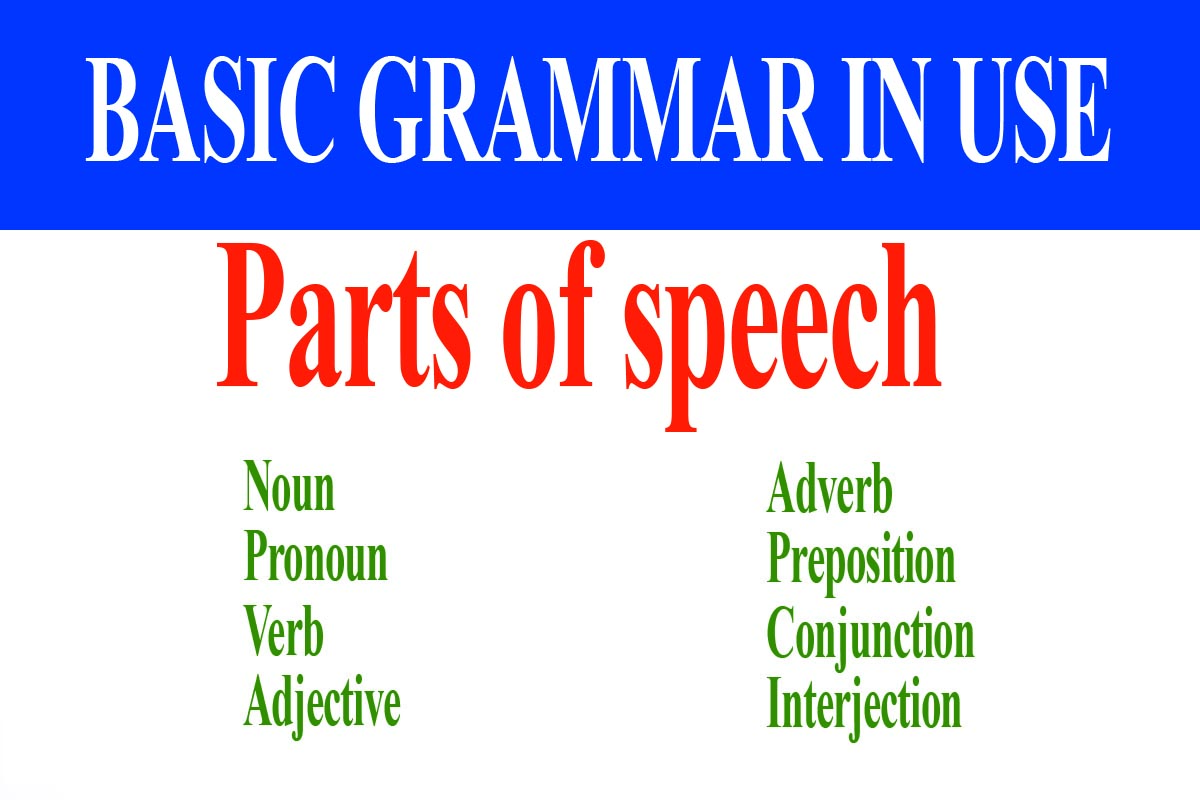
Parts of speech focuses on the basics of English grammar you need to speak and write as effectively as possible.Whenever people read, write, speak, or listen, they are using their knowledge of grammar. In the article below I cover the 8 parts of speech in English with definition and examples.
The 8 Parts of Speech in English
What are the parts of speech?
The system of classifying words based on their function is known as the parts of speech.
Although English has hundreds of thousands of words, every one can be placed into at least one of eight groups, or classifications.
The eight parts of speech:
- Noun
- Pronoun
- Verb
- Adjective
- Adverb
- Preposition
- Conjunction
- Interjection
Learning about the eight parts of speech will help you understand the grammar explanations of some of the mistakes you make and figure out how to correct them. Because some words can be used in several different ways, you have to look at what a word is doing in a specific sentence before you can classify it( its parts of speech).
For example: In the sentences below the word “fast” is used in different ways and functioning in different forms.
- He ran fast so he wouldn’t be late. (describes how he ran…adverb)
- Muslims fast during Ramadan. ( tells about an action….verb)
- Their fast lasted for three days. (names a thing…noun)
- That clock is ten minutes fast. (describe the clock…..adjective)
The basics of parts of speech
1. NOUN
Words that name people, places, things and qualities are called nouns.
- People: Cashier, Carol Boys
- Places: Lake, Center, Hazara Town
- Things: ( Animal) Cat, Bug (Object) Fork, Television (Substance) Iron, air (Action) a race, the dance (Measures) kilogram, centimeter
- Qualities: Happiness, Honesty, Beauty
2. PRONOUN
Pronouns refer to and replace nouns(the names of people, places, and things) that have already been mentioned.
- She saw it when they bought it.
- Everybody was glad when it was over.
- The candy that we gave them was made last year.
3. VERBS
Verb is word which shows an action, but it also shows state/ possession, presence or absence of a person or thing.
- The pitcher threw the ball to the catcher.
- They had already bought her present.
- Most students are usually sitting on the steps when the teacher arrives.
- My sister is a nurse; I am a teacher
4. ADJECTIVES
An adjective is a word which describes or modifies a noun or pronoun.
Adjectives are usually placed before the noun.
- the white, puffy clouds
- a happy, carefree child
- the tall, stately trees
Compare the meaning of these two sentences. - I have a blue car. I have the blue car.
The words ‘a’ and ‘the’ change the meaning of the word car. Although some grammar books call them indefinite (a, an) and definite articles (the), others called them adjectives. Either is correct.
5. ADVERBS
An adverbs is a word which is used to modify verb, adjective or another adverb.
Verb:
- He is driving quickly. How is he driving?
- He is driving away. Where is he driving?
Adjective:
- The campers saw a very beautiful sunset.
- The campers saw a truly beautiful sunset.
Adverb:
- He is driving so quickly.
Note: A few words can be used as adverbs or adjectives. Three examples of such words are: early, fast, very and late.
Some words can only be used as adverbs, never as adjectives: well, often, quite, surely, , not, almost, never, always, usually and so
- He was so happy.
6. PREPOSITIONS
Preposition is a word which is used to show relationship between two nouns, pronouns or a noun and a verb.
- The students are rehearsing in the class.
Preposition + noun or pronoun = prepositional phrase
- Time: after + the party = (after the party)
- Place: under + the table = (under the table)
- Ownership: of + our town = (of our town)
7. INTERJECTIONS
An interjection is a word or group of words used to express strong feeling.
It can be an actual word, or merely a sound and is followed by an exclamation mark (!) or a comma.
- Wow! Oh! Oh, no! Ouch! Never! Fabulous! Fantastic! Ah! No! Wow!
8. CONJUNCTIONS
Conjunctions are used to join words, phrases, or clauses .
Conjunctions can be found in any position in a sentence except the very end.
- Ali and Abbas followed the young cub, but they could not catch it.
The words ‘And’ and ‘But’ are conjunctions, and joins two nouns; but joins two complete ideas.

3 comments
Thanks for this. This really help me.
You are welcome dear.
I’m interested in learning English.